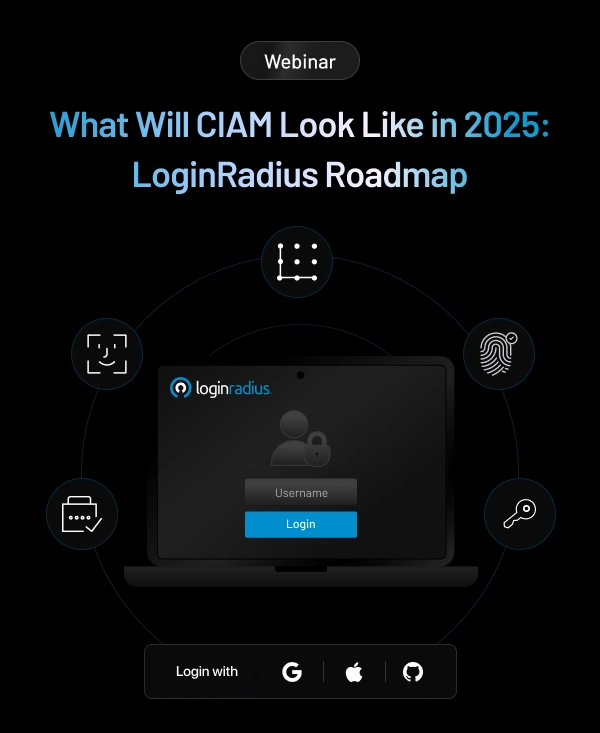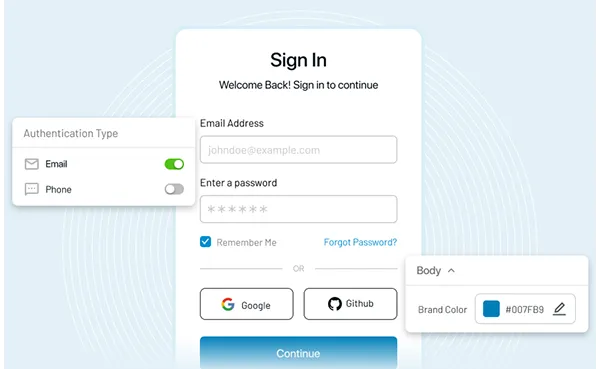Introduction
The online shopping industry is growing exponentially, as customers are increasingly relying on platforms that offer greater convenience and user experience.
However, as e-commerce continues to grow, the security of online transactions is becoming all the more important. And merchants must take measures to protect both themselves and their customers from fraud and data breaches.
However, the sudden rise in data breaches has increased the risks, especially for retailers and merchants catering to online customers.
On the other hand, data privacy and user experience are always on the list of customer expectations. And failing to offer the same could be fatal for online merchants. Hence, a robust mechanism to handle security and user experience is becoming the need of the hour.
And one of the best ways to achieve this is through a robust customer identity and access management (CIAM) solution. Let’s explore why strong customer authentication benefits merchants and how it can help protect against fraud.
What is CIAM Authentication?
Authentication is verifying a customer's identity through multiple authentication factors.
These factors include something the customer knows (such as a password), something the customer has (such as a mobile phone), and something the customer is (such as a fingerprint or facial recognition).
Customer identity and access management (CIAM) is a digital identity management software solution for businesses that combines login verification with customer data storage.
CIAM aims to improve the customer's sign-up and login experience while securely managing customer identities. CIAM offers the luxury of a centralized customer database that links all other apps and services to provide a secure and seamless customer experience.
CIAM is designed to make it much more difficult for fraudsters to access customer accounts and make fraudulent transactions.
Why is Strong Customer Authentication Important for Merchants?
1. Protection Against Fraud
Fraud is a significant problem for merchants and can cause significant financial losses. CIAM helps prevent fraud by making it much more difficult for fraudsters to access customer accounts and make fraudulent transactions. CIAM ensures that only authorized users can access their accounts and that all transactions are legitimate.
2. Compliance with Regulations
Regulatory authorities require that merchants implement strong authentication methods to protect customer data. Regulations such as the EU’s Payment Services Directive 2 (PSD2) require merchants to implement CIAM to protect against fraud and ensure the security of online transactions.
3. Increased Customer Trust
By implementing CIAM, merchants can increase customer trust and confidence in their online transactions. Customers are more likely to purchase from merchants who have taken steps to protect their accounts and ensure their transactions are legitimate.
4. Improved Customer Experience
CIAM can also improve the customer experience by reducing the risk of fraudulent transactions, leading to chargebacks and canceled orders. This helps to ensure that customers are satisfied with their purchases and are more likely to return to the merchant for future purchases.
5. Better Risk Management
CIAM helps merchants to better manage risk by identifying potentially fraudulent transactions before they occur. By implementing CIAM, merchants can reduce the risk of financial loss due to fraudulent activity and ensure their business remains secure and profitable.
How to Implement Strong Customer Authentication?
Merchants can implement CIAM using two-factor authentication (2FA) or multi-factor authentication (MFA). 2FA requires customers to provide two forms of identification: a password and a code sent to their mobile device.
MFA requires customers to provide three or more forms of identification, such as a password, a code sent to their mobile device, and a fingerprint scan.
Merchants can also use tools such as fraud detection and prevention software to monitor transactions and identify potentially fraudulent activity. These tools can help merchants to detect and prevent fraudulent transactions before they occur.
To Conclude
As e-commerce continues to grow, merchants must take measures to protect themselves and their customers from fraud and data breaches. Strong customer authentication is one of the most effective ways to achieve this.
By implementing CIAM, merchants can protect against fraud, comply with regulations, increase customer trust, improve the customer experience, and better manage risk. With the right tools and strategies, merchants can ensure the security of their online transactions and build a successful and profitable e-commerce business.

















